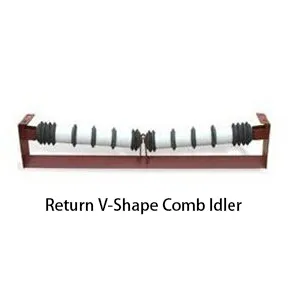 Afrikaans
Afrikaans  Albanian
Albanian  Amharic
Amharic  Arabic
Arabic  Armenian
Armenian  Azerbaijani
Azerbaijani  Basque
Basque  Belarusian
Belarusian  Bengali
Bengali  Bosnian
Bosnian  Bulgarian
Bulgarian  Catalan
Catalan  Cebuano
Cebuano  Corsican
Corsican  Croatian
Croatian  Czech
Czech  Danish
Danish  Dutch
Dutch  English
English  Esperanto
Esperanto  Estonian
Estonian  Finnish
Finnish  French
French  Frisian
Frisian  Galician
Galician  Georgian
Georgian  German
German  Greek
Greek  Gujarati
Gujarati  Haitian Creole
Haitian Creole  hausa
hausa  hawaiian
hawaiian  Hebrew
Hebrew  Hindi
Hindi  Miao
Miao  Hungarian
Hungarian  Icelandic
Icelandic  igbo
igbo  Indonesian
Indonesian  irish
irish  Italian
Italian  Japanese
Japanese  Javanese
Javanese  Kannada
Kannada  kazakh
kazakh  Khmer
Khmer  Rwandese
Rwandese  Korean
Korean  Kurdish
Kurdish  Kyrgyz
Kyrgyz  Lao
Lao  Latin
Latin  Latvian
Latvian  Lithuanian
Lithuanian  Luxembourgish
Luxembourgish  Macedonian
Macedonian  Malgashi
Malgashi  Malay
Malay  Malayalam
Malayalam  Maltese
Maltese  Maori
Maori  Marathi
Marathi  Mongolian
Mongolian  Myanmar
Myanmar  Nepali
Nepali  Norwegian
Norwegian  Norwegian
Norwegian  Occitan
Occitan  Pashto
Pashto  Persian
Persian  Polish
Polish  Portuguese
Portuguese  Punjabi
Punjabi  Romanian
Romanian  Russian
Russian  Samoan
Samoan  Scottish Gaelic
Scottish Gaelic  Serbian
Serbian  Sesotho
Sesotho  Shona
Shona  Sindhi
Sindhi  Sinhala
Sinhala  Slovak
Slovak  Slovenian
Slovenian  Somali
Somali  Spanish
Spanish  Sundanese
Sundanese  Swahili
Swahili  Swedish
Swedish  Tagalog
Tagalog  Tajik
Tajik  Tamil
Tamil  Tatar
Tatar  Telugu
Telugu  Thai
Thai  Turkish
Turkish  Turkmen
Turkmen  Ukrainian
Ukrainian  Urdu
Urdu  Uighur
Uighur  Uzbek
Uzbek  Vietnamese
Vietnamese  Welsh
Welsh  Bantu
Bantu  Yiddish
Yiddish  Yoruba
Yoruba  Zulu
Zulu troughing roller
Understanding Troughing Rollers in Conveyor Systems
Troughing rollers are an essential component of conveyor systems, widely used in various industries such as mining, agriculture, and manufacturing. They play a significant role in enhancing the efficiency of material handling processes by ensuring the smooth and effective transportation of bulk materials. Understanding the design, functionality, and benefits of troughing rollers can greatly improve operational efficiency and productivity.
A troughing roller is designed to hold and support the conveyor belt in a trough-like shape, which helps to contain the material being transported. This design is particularly effective for moving loose or bulk materials, such as coal, grains, ores, and other granular substances. Troughing rollers are typically arranged in a three-roller system; however, variations exist that may employ more or fewer rollers depending on the specific application and load requirements.
One of the key advantages of troughing rollers is their ability to minimize material spillage
. The concave shape created by the rollers helps keep the materials intact within the confines of the belt, reducing the likelihood of waste and contributing to a cleaner, safer work environment. This form of containment not only conserves materials but also lessens the environmental impact caused by spillage.troughing roller

Additionally, troughing rollers improve the overall stability of the conveyor belt. By providing robust support along the conveyor’s length, they reduce sagging and maintain the belt’s alignment. This alignment is crucial for preventing excessive wear and tear, which can lead to costly repairs and downtime. The consistent tension maintained by these rollers ensures that the belt operates efficiently, minimizing energy consumption and optimizing performance.
Another important consideration is the selection of the right material for troughing rollers. Typically made from high-quality steel or reinforced plastic, these rollers are designed to withstand harsh operating conditions and carry heavy loads. The durability of troughing rollers translates into longer service life and reduced maintenance costs, providing a significant return on investment for businesses.
When installing troughing rollers, it is vital to ensure proper spacing and alignment. Incorrectly spaced rollers can lead to uneven wear on the belt and potential operational issues. Regular maintenance checks and adjustments will help to ensure that the rollers function as intended and prolong the lifespan of the conveyor belt.
In summary, troughing rollers are a critical component of efficient conveyor systems. Their design, aimed at containment and stability, contributes significantly to the effective transport of bulk materials. By minimizing spillage, enhancing stability, and providing durability, troughing rollers not only improve operational efficiency but also drive down costs associated with material loss and maintenance. For industries reliant on conveyor systems, investing in high-quality troughing rollers is an essential step towards improved productivity and operational success.
-
Revolutionizing Conveyor Reliability with Advanced Rubber Lagging PulleysNewsJul.22,2025
-
Powering Precision and Durability with Expert Manufacturers of Conveyor ComponentsNewsJul.22,2025
-
Optimizing Conveyor Systems with Advanced Conveyor AccessoriesNewsJul.22,2025
-
Maximize Conveyor Efficiency with Quality Conveyor Idler PulleysNewsJul.22,2025
-
Future-Proof Your Conveyor System with High-Performance Polyurethane RollerNewsJul.22,2025
-
Driving Efficiency Forward with Quality Idlers and RollersNewsJul.22,2025





























